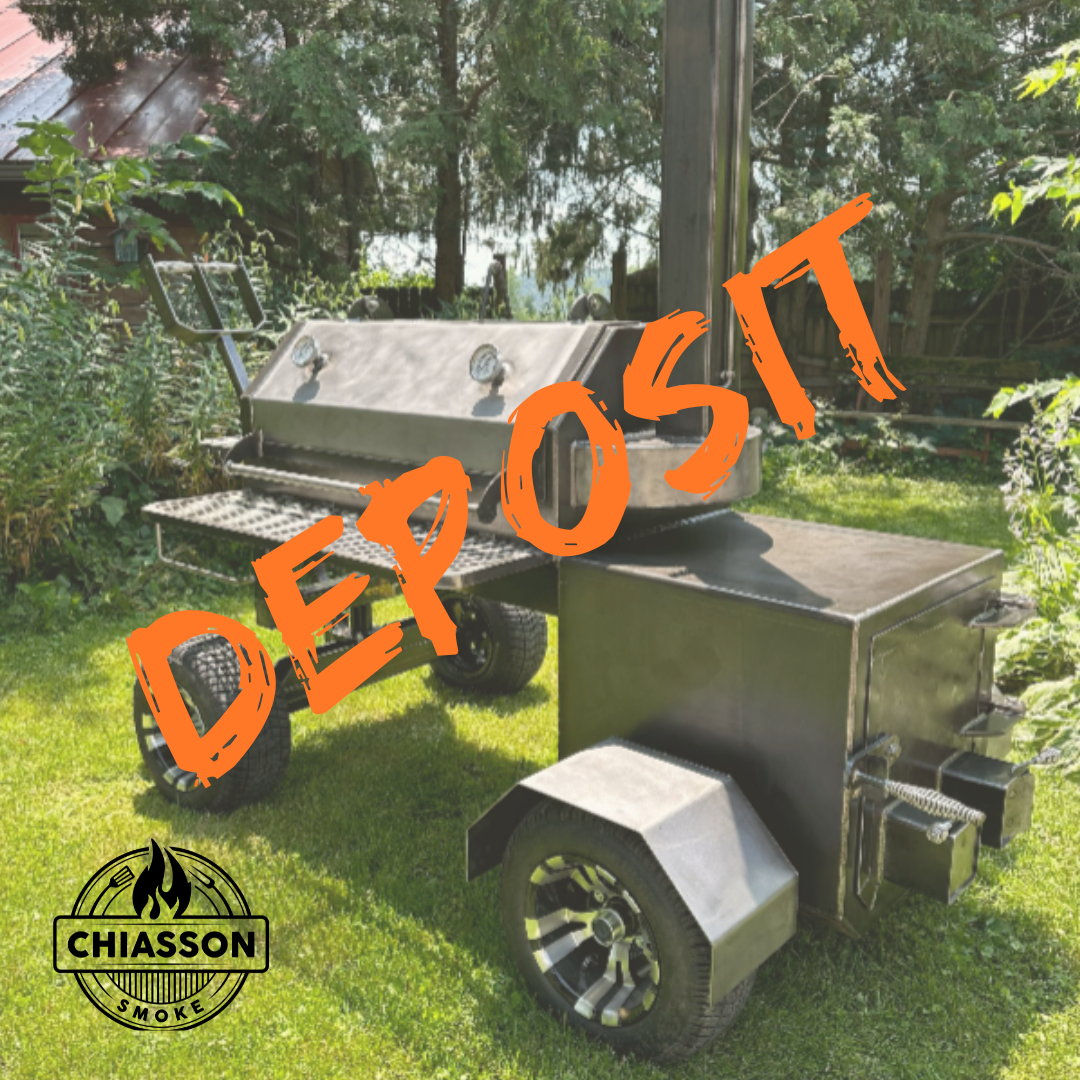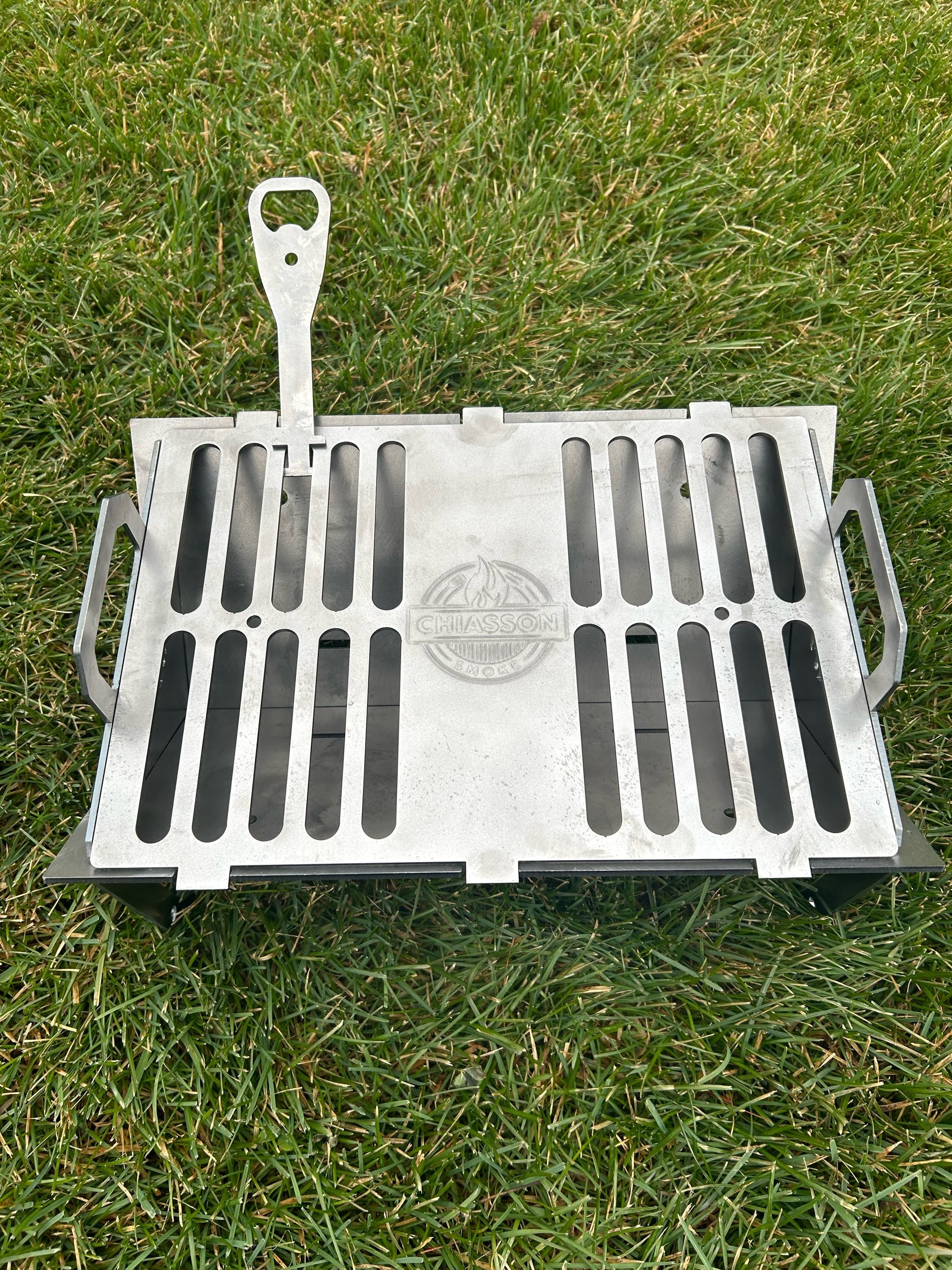How Smoke Affects Flavor
A Whiff of Magic
Have you ever bitten into a piece of smoked brisket or ribs and felt like your taste buds just did a happy dance? That magical, deep flavor didn’t come from just salt and pepper. It came from smoke. Real, honest-to-goodness wood smoke.
But what is smoke? And how does it make meat taste so good? In this article, we’re going to break down the science of smoke—where it comes from, how it works, and why it makes food so delicious. We’ll keep it fun, easy to understand, and packed with facts that’ll make you sound like a BBQ genius at your next cookout.
What Is Smoke, Anyway?
Smoke is more than just cloudy air from a fire. It’s a mix of gases, tiny particles, and water vapor made when wood burns. That mix includes things like carbon dioxide, carbon monoxide, and a group of molecules called phenols and aldehydes—don’t worry, we’ll explain.
Basically, smoke is like a chemical soup. Some of those chemicals stick to your food and change how it tastes, smells, and looks.
But not all smoke is the same. Different woods give off different smoke, and that smoke creates different flavors. Hickory, for example, adds a strong, bacon-like flavor. Applewood gives a sweet, mild taste. And mesquite? That’s the heavy-metal rock band of smoking—intense and bold.
The Fire Triangle: How Smoke Gets Made
Let’s talk fire for a second. To make smoke, you need three things—fuel (wood), heat, and oxygen. This is called the fire triangle. When all three come together in the right balance, you get clean-burning smoke that tastes great.
If the fire is too hot or doesn’t have enough air, it creates dirty smoke. That’s the dark, sooty kind that smells like burning tires. Not good eats.
Clean smoke, on the other hand, is usually thin and blue. It looks like it’s barely there, but it packs a flavor punch. That’s the kind of smoke you want hugging your meat like a warm, tasty blanket.
How Smoke Travels Into Meat
Here’s where the science gets cool. When smoke touches the surface of meat, two things happen. First, it sticks. Those little molecules in the smoke—like phenols and acids—cling to the surface. Some even soak in a little, especially if the meat is moist. (And yes, moist meat grabs smoke better. That’s why pitmasters love a good spritz.)
Second, the smoke reacts with the meat. It creates new flavors as it interacts with fats, proteins, and even the salt in your rub. It’s like painting with invisible flavor brushes.
This doesn’t happen forever, though. Most of the smoke flavor gets into the meat in the first couple of hours. After that, it’s more about bark-building—creating that dark, flavorful crust on the outside.
See also: 1 Hour Smoker Recipes
The Smoke Ring: Pretty, but Not Flavorful
Ever see that pink layer just under the surface of smoked meat? That’s the smoke ring. People love it because it looks amazing, but here’s the truth: it doesn’t actually add flavor.
The smoke ring is caused by a chemical reaction between nitric oxide (a gas in smoke) and the myoglobin in meat. Myoglobin is what makes raw meat red. When nitric oxide gets into the meat before it cooks all the way, it keeps that red color from turning brown.
It’s science, not sorcery. And while it’s fun to show off on Instagram, your mouth won’t really taste it.
Different Woods, Different Flavors
Let’s talk trees. Wood comes from different species of trees, and each kind has its own flavor profile. That’s because every tree has its own mix of natural oils, sugars, and compounds.
Oak: Mild, earthy, and reliable. The good ol’ boy of smoking wood.
Hickory: Strong and hearty. Think bacon or campfire.
Apple: Sweet and fruity. Great for pork and poultry.
Cherry: Slightly sweet with a rosy color.
Mesquite: Super strong and smoky. Use in small doses.
Pecan: Nutty, rich, and a little sweet.
You can even mix woods to create your own signature flavor. Some pitmasters blend hickory and applewood for a balance of bold and sweet.
Just don’t use pine, fir, or any “soft” wood. Those have too much resin, and that resin makes smoke taste bitter, even toxic. Save that stuff for campfires, not cooking.
The Flavor Molecules in Smoke
Here’s the nerdy part. The flavor in smoke comes from four main groups of molecules:
Phenols – These give smoke its “smoky” smell. They also have antioxidant powers, which help preserve meat.
Carbonyls – These add sweetness and help with browning. They’re behind that caramelized, roasted flavor.
Acids – These make smoke taste sharp or tangy. They can also tenderize meat.
Alcohols – Yep, smoke has trace amounts of alcohol, which help dissolve other flavors and carry them into the meat.
Together, these molecules turn plain meat into smoky goodness. It’s like a flavor orchestra, and the wood is your conductor.
Temperature and Time: The Perfect Balance
Smoking meat isn’t just about flavor. It’s also about time and temperature. Smoke works best in a range between 225°F and 275°F. Too hot, and the meat dries out before it absorbs enough flavor. Too cool, and it takes forever to cook.
That’s why “low and slow” is the name of the game for smoking (which is one of the main differences between smoking and grilling). It gives smoke time to do its job without rushing the process. The longer the meat cooks, the more chance smoke has to develop flavor on the outside and create a beautiful bark.
But again—most smoke flavor gets in during the first couple of hours. After that, it’s all about heat, seasoning, and bark development.
The Role of the Bark
Ah, bark. That chewy, crusty, flavor-packed layer on the outside of smoked meat. It’s the crown jewel of barbecue.
Bark forms when smoke, heat, and rub ingredients (like salt, sugar, and spices) mix with the surface of the meat over time. As water evaporates, it leaves behind all those tasty compounds to caramelize and harden into bark.
Smoke helps the bark by adding phenols and carbonyls that stick to the surface and make it darker and tastier. That’s why you don’t want to wrap meat in foil too early—it softens the bark and keeps smoke out.
Moisture Matters
Moisture is a big part of how smoke flavor gets into meat. Water helps trap smoke molecules and lets them stick better to the meat’s surface. That’s why spritzing meat with apple juice, vinegar, or broth during the cook isn’t just for show.
It also keeps the surface from drying out too fast. Dry meat doesn’t take in smoke as well. But too much moisture can make the smoke flavor taste bitter or “ashy.” It’s all about balance.
The Smoker You Use Makes a Difference
Whether you’re using a stick burner, pellet smoker, kamado grill, or electric box, the type of smoker changes the way smoke flows and builds flavor.
Stick burners: Burn wood logs and give you full control of smoke quality. Great for pros.
Pellet smokers: Super easy to use. Feed in pellets and let the machine handle the heat.
Electric or gas smokers: Very consistent but can lack the deep flavor of a real wood fire unless you use strong wood chips.
Some smokers make it easier to control clean smoke. Others might give you too much white, billowy smoke—which sounds cool but tastes bad.
Too Much Smoke?
Yes, there is such a thing as too much smoke. If your food tastes like an old campfire, you overdid it. Smoke should be an ingredient, not the whole dish.
Too much smoke means your fire was probably burning dirty, or you kept adding wood the whole time. That’s like dumping a whole jar of salt into your soup. A little goes a long way.
Pro Tips for Better Smoke Flavor
Use dry, seasoned wood—never green or wet wood.
Aim for clean, thin, blue smoke.
Keep your meat moist during the first few hours.
Don’t overload the smoker with wood.
Let the bark form before wrapping or spritzing too much.
Use a smoker that matches your skill level.
Use a high quality smoker brand like Chiasson Smoke.
Conclusion: Smoke Is a Science and an Art
Smoking meat isn’t just cooking—it’s chemistry. The smoke that dances around your brisket is filled with molecules that stick to the meat, soak in flavor, and turn it into something magical.
But it’s also an art. Choosing the right wood, balancing time and temperature, and knowing when to let the meat rest takes practice. The more you learn, the better your BBQ becomes.
So the next time you smell that sweet, woodsy smoke curling into the air, remember: it’s not just smoke. It’s science in action—and it tastes amazing.










